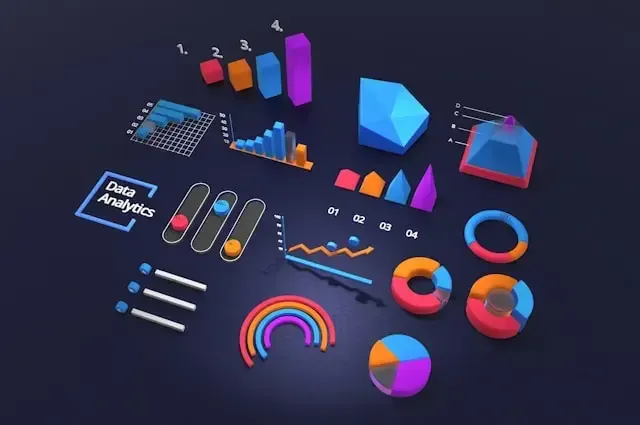5G technology is the next generation of mobile networks, offering faster data speeds, lower latency, and greater device capacity. It will revolutionize communication, enable advanced technologies like IoT and AI, and drive the digital economy forward, transforming industries like healthcare, transportation, and manufacturing for a more connected future.
Introduction
5G technology, the next evolution of mobile networks, is set to revolutionize communication and reshape the digital economy. Offering faster data speeds, lower latency, and the ability to connect more devices than ever before, 5G represents a significant leap forward from previous generations like 3G and 4G. It’s not just about making our phones faster—it’s about enabling a whole new world of interconnected devices, smarter cities, and innovative digital services that will drive economic growth across sectors.
The importance of 5G in modern communication and the digital economy is profound. From enhancing the efficiency of industries like healthcare and manufacturing to enabling real-time communication for remote workers, the applications of 5G are vast. This technology will serve as the backbone for innovations like autonomous vehicles, smart cities, and the Internet of Things (IoT). In short, 5G is not just a technological upgrade; it’s the foundation for the next era of global digital transformation.
Understanding 5G Technology
What is 5G Technology?
5G stands for the fifth generation of mobile networks, designed to provide faster speeds, reduced latency, and the ability to handle a greater number of connected devices. Unlike 3G and 4G, which primarily focused on improving mobile internet, 5G aims to create a connected ecosystem for machines, objects, and devices. It enables data transfer at speeds that are up to 100 times faster than 4G, opening up new possibilities for applications in industries like healthcare, transportation, and entertainment.
Key Features of 5G: Faster Speeds, Lower Latency, and Greater Capacity
- Faster speeds: 5G offers download speeds of up to 10 Gbps, dramatically faster than 4G.
- Lower latency: Latency refers to the delay before data transfer begins, and 5G reduces this to under 1 millisecond, crucial for real-time communication.
- Greater capacity: 5G networks can handle far more devices at once, making it ideal for smart cities and IoT devices.
How 5G Compares to Previous Generations (3G, 4G)
While 3G focused on mobile data and 4G brought higher speeds for streaming and downloads, 5G takes it to another level by enabling seamless real-time interactions. 5G can support up to a million devices per square kilometer, compared to 4G’s 100,000, and it can do this while maintaining ultra-low latency and blazing fast speeds.
Faster Data Speeds and Its Impact on Communication
Significance of Faster Data Speeds
The hallmark of 5G technology is its incredible speed. Faster data transfer means that we can download movies in seconds, make crystal-clear video calls, and stream high-definition content without buffering. In a world where content consumption is growing exponentially, 5G’s data speeds will ensure that users can access information in real time without delays.
Examples of How Faster Speeds Enhance Communication
Faster speeds mean that video calls become smoother, high-quality streaming is seamless, and large file transfers happen almost instantly. For instance, remote workers can engage in high-definition video conferencing without interruptions, allowing for a more productive digital workplace.
Benefits for Consumers and Businesses
For consumers, faster data speeds mean enhanced experiences with mobile applications, gaming, and streaming services. Businesses, on the other hand, benefit from faster file transfers, improved cloud-based operations, and the ability to process and analyze data more efficiently. This leads to better customer service and streamlined internal operations.
Lower Latency: Enhancing Real-Time Communication
Explanation of Lower Latency and Why It Matters
Latency measures the time it takes for data to travel between two points. With 4G networks, latency typically sits around 50 milliseconds, but 5G reduces this to just 1 millisecond or less. This near-instantaneous communication is essential for applications that require real-time interaction, such as autonomous vehicles and remote surgeries.
Impact on Real-Time Communication (Gaming, Live Streaming, etc.)
Lower latency makes real-time applications like online gaming and live streaming much smoother. Gamers can experience immersive, lag-free play, and live streamers can broadcast without delays. In sectors like finance, where milliseconds matter, 5G’s low latency ensures fast and accurate transactions.
Role in Critical Industries (Healthcare, Autonomous Vehicles)
In healthcare, low latency enables remote surgeries where doctors can operate on patients from miles away using robotic systems. Autonomous vehicles also rely on 5G’s low latency to communicate with each other and their surroundings in real-time, ensuring safer, more efficient driving.
Greater Network Capacity: Connecting More Devices
What Does Greater Network Capacity Mean?
Greater network capacity refers to the ability of 5G to connect a vast number of devices simultaneously without losing performance. This is essential as more devices become connected to the internet, from smartphones and tablets to IoT sensors, smart appliances, and vehicles.
Impact on IoT (Internet of Things) Devices and Smart Homes
In smart homes, 5G can connect multiple IoT devices—from smart thermostats to security cameras—ensuring they operate efficiently and in sync. In larger ecosystems like smart cities, it allows for the management of traffic lights, waste systems, and public services, creating a more efficient urban environment.
How Businesses Can Leverage This Capacity
Businesses can take advantage of 5G’s network capacity to implement IoT solutions in factories, warehouses, and logistics networks. For example, smart sensors can monitor equipment in real-time, preventing breakdowns and optimizing maintenance schedules, which boosts productivity and reduces costs.
Improved Connectivity: A Game-Changer for Industries
How 5G Improves Overall Connectivity
5G significantly improves connectivity by reducing bottlenecks in data transfer, allowing for seamless, always-on communication between devices. This improved connectivity enables industries to work faster and more efficiently, supporting innovations like augmented reality (AR) and virtual reality (VR) in real-time.
Sectors That Will Benefit Most (Manufacturing, Logistics, Healthcare)
- Manufacturing: 5G enables automated factories with interconnected machines that can self-diagnose and repair issues.
- Logistics: Real-time tracking of goods ensures quicker, more reliable delivery.
- Healthcare: Remote monitoring devices will provide doctors with real-time health data, improving patient outcomes.
Case Studies: Early Adoption of 5G in Industries
Several industries are already adopting 5G technology. For instance, in the automotive sector, 5G is being used to test and develop autonomous cars. In healthcare, companies are utilizing 5G for remote surgery and patient monitoring, particularly in rural areas with limited access to healthcare facilities.
5G and the Digital Economy: An Overview
Defining the Digital Economy and Its Growth
The digital economy refers to economic activities powered by digital technologies. 5G will accelerate the growth of this economy by enabling more efficient business operations, new digital products and services, and a more connected global marketplace.
The Link Between 5G and Economic Development
5G will stimulate economic development by creating new opportunities for innovation, driving productivity, and generating new business models. It is predicted that 5G will add $1.5 trillion to the global economy by 2030, through its impact on industries like manufacturing, healthcare, and transportation.
Predictions for Economic Growth Driven by 5G
By 2035, 5G is expected to create up to 22 million jobs globally, particularly in tech and engineering fields. Additionally, new business models, driven by technologies like IoT, AI, and cloud computing, will reshape traditional industries and generate fresh revenue streams.
Unlocking New Applications: AI, IoT, and Edge Computing
How 5G Enables AI and IoT Technologies
5G’s ability to handle vast amounts of data in real time is crucial for AI and IoT. AI applications will benefit from 5G’s high-speed processing, enabling machines to make decisions more quickly. IoT will also flourish, with billions of devices seamlessly connected.
Role of 5G in Edge Computing and Decentralized Networks
Edge computing brings data processing closer to the source, reducing latency. 5G’s speed and capacity will power edge computing solutions, allowing businesses to run decentralized networks that are faster and more reliable.
Future Applications We Can Expect to See
Future applications include smart cities where autonomous vehicles and IoT devices work together, real-time AR/VR applications for education and training, and intelligent healthcare systems that monitor patients remotely and provide immediate medical interventions.
The 5G-Powered Digital Workplace
How 5G Will Transform Remote Work and Collaboration
5G will make remote work more seamless by providing fast, reliable internet connections for video conferencing, cloud computing, and virtual collaboration tools. Employees will have the ability to work from anywhere without experiencing the frustrations of slow networks or poor call quality.
Role of 5G in Enabling Real-Time Video Conferencing and Virtual Meetings
With 5G, video conferencing and virtual meetings will become more immersive, allowing for high-definition video and low-latency interactions. This will make remote work as effective, if not more so, than working from an office.
Benefits for Productivity and Flexibility
Businesses will benefit from increased flexibility, as employees can work from anywhere, leading to higher job satisfaction and productivity. Faster networks also mean more efficient access to digital tools and resources, reducing downtime and boosting overall productivity.
Smart Cities: Building the Cities of the Future with 5G
What Are Smart Cities and How Do They Work?
Smart cities use digital technology to improve urban infrastructure and public services. 5G will play a key role by enabling interconnected systems that optimize energy use, reduce traffic congestion, and enhance public safety.
Role of 5G in Smart City Initiatives (Traffic Management, Waste Management)
5G enables smart traffic systems that reduce congestion by adjusting traffic lights in real time. Waste management systems will also be optimized, with IoT devices providing data on waste levels to ensure timely collection and recycling.
Case Studies: Early Implementations of 5G in Smart Cities
Cities like Singapore and Seoul are leading the charge, using 5G to power smart surveillance systems, autonomous public transport, and energy-efficient infrastructure.
5G and Digital Identity
How 5G Enhances Digital Identity Systems
5G improves digital identity systems by allowing faster and more secure authentication methods. Biometric authentication, for instance, can happen in real-time with 5G, ensuring secure access to services without delays.
Applications in Government Services and Cybersecurity
Governments can use 5G to enhance public services, offering citizens more secure access to online services like tax filing, healthcare, and social benefits. In cybersecurity, 5G will provide better tools for detecting and preventing data breaches.
Importance for Secure Transactions in a Digital Economy
As more financial transactions move online, 5G’s enhanced security features will be crucial in preventing fraud and ensuring the safe transfer of sensitive data. This is vital for building trust in a rapidly growing digital economy.
Remote Work and Remote Technicians: A 5G Revolution
How 5G Will Enable Remote Work in Specialized Fields (Engineering, Healthcare)
In fields like engineering and healthcare, where high levels of accuracy are required, 5G’s reliability will enable technicians and professionals to work remotely without the need to be physically present. This could revolutionize industries by allowing experts to collaborate on complex tasks from anywhere in the world.
The Role of 5G in Maintaining Guaranteed Connectivity for Technicians
For technicians in the field, guaranteed levels of connectivity are essential for accessing real-time data, communicating with teams, and troubleshooting issues. 5G will provide stable, high-speed connections, ensuring that they can perform their tasks efficiently.
How This Will Change the Face of Technical Support and Fieldwork
This will transform technical support, allowing experts to provide real-time guidance and even operate equipment remotely. It will also reduce the need for on-site visits, saving time and costs.
5G’s Role in Accelerating Innovation
How Faster Communication and Enhanced Connectivity Will Boost Innovation
5G will accelerate innovation by enabling faster communication between devices and humans, creating new possibilities in fields like AI, AR/VR, and machine learning. Companies will be able to develop and deploy new technologies more quickly, creating a competitive edge.
Emerging Startups and Companies Relying on 5G
Startups focused on industries like smart agriculture, drone technology, and autonomous systems are poised to leverage 5G to create groundbreaking products. Companies like Tesla, Uber, and even healthcare startups are already using 5G to develop next-generation solutions.
Long-Term Implications for Tech Development and the Economy
In the long term, 5G will reshape the tech landscape by driving new innovations in every sector. It will enable advanced AI, smarter robots, and more efficient industries, all of which will contribute to sustained economic growth and job creation.
Challenges and Barriers to 5G Implementation
Infrastructure Challenges (Deployment Costs, Spectrum Allocation)
Building a 5G network requires significant investment in infrastructure, including new cell towers and small cells. Additionally, spectrum allocation issues can delay the rollout of 5G, as different countries must coordinate and allocate the necessary frequencies.
Security Concerns with 5G Networks
The complexity and scope of 5G networks make them more vulnerable to cyberattacks. As billions of devices connect to 5G, securing the network from potential threats will be a critical challenge for governments and businesses alike.
Regulatory Issues and Global Adoption Rates
While many countries are embracing 5G, regulatory hurdles remain. Spectrum licensing, privacy concerns, and international cooperation are all key factors that could slow down global adoption, especially in developing countries.
Conclusion
5G technology is set to transform communication and drive the digital economy forward. With faster data speeds, lower latency, and greater network capacity, 5G will revolutionize industries and unlock new opportunities for innovation. From enhancing real-time communication and enabling smart cities to boosting remote work capabilities and fostering economic growth, the potential of 5G is limitless. As we move into this new era of connectivity, the world will witness significant advancements in how we live, work, and interact in a digital-first society.


























